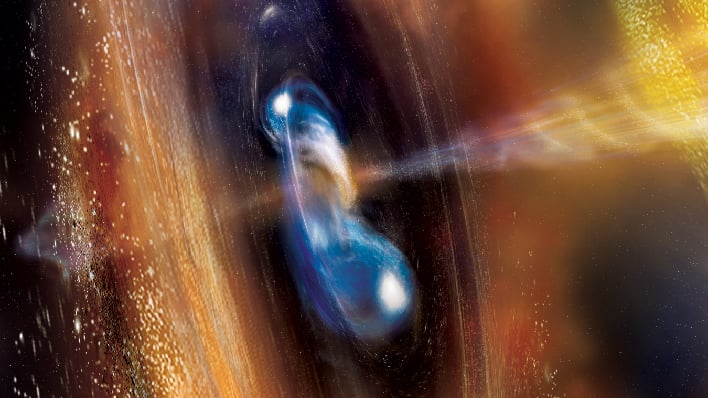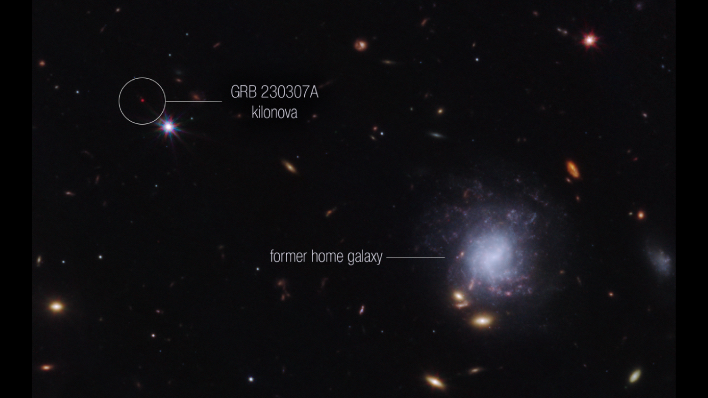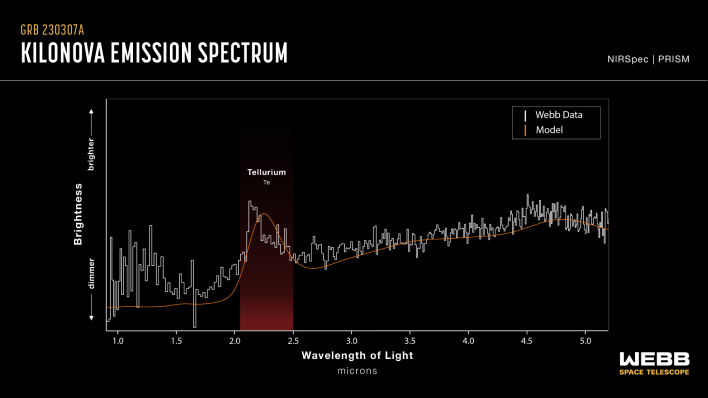A Violent Star Collision 1B Light Years Away Created Rare Heavy Elements And NASA Saw It

Called a kilonova, the explosion produced by a neutron star merging with either a black hole or another neutron star, is a rare event, making it extremely difficult to detect. According to NASA, star mergers have long been theorized as being the ideal "pressure cookers" to create rarer elements that are substantially heavier than iron. However, astronomers have had issues in gaining solid evidence. But thanks to Webb, those difficulties may be a thing of the past.
The team of scientists believes that other elements on the periodic table, other than tellurium, may be present in the aftermath of the kilonova, such as iodine, an element needed for much of life on Earth.
"Just over 150 years since Dmitri Mendeleev wrote down the periodic table of elements, we are now finally in the position to start filling in those last blanks of understanding where everything was made, thanks to Webb," remarked Andrew Levan of Radboud University in the Netherlands and lead author of the study.
Gamma-ray burst GRB 230307A was first detected by NASA's Gamma-ray Space Telescope in March. It is the second brightest GRB observed in over 50 years, and about 1,000 times brighter than a typical gamma-ray burst that Fermi observes. It lasted for 200 seconds, placing it in the category of long duration gamma-ray bursts.
"This burst is way into the long category. It's not near the border. But it seems to be coming from a merging neutron star," explained Eric Burns, a co-author of the study.
The highly sensitive infrared capabilities of Webb made it a perfect tool for scientists to identify the home address of the two neutron stars that created the kilonova. Its address is a spiral galaxy about 120,000 light-years away from the site of the merger.
"Webb provides a phenomenal boost and may find even heavier elements," remarked Ben Gompertz, a co-author of the study at the University of Birmingham in the UK. "As we get more frequent observations, the models will improve, and the spectrum may evolve more in time." He added that Webb has opened the door to do more and that its abilities will be "completely transformative for our understanding of the universe."



